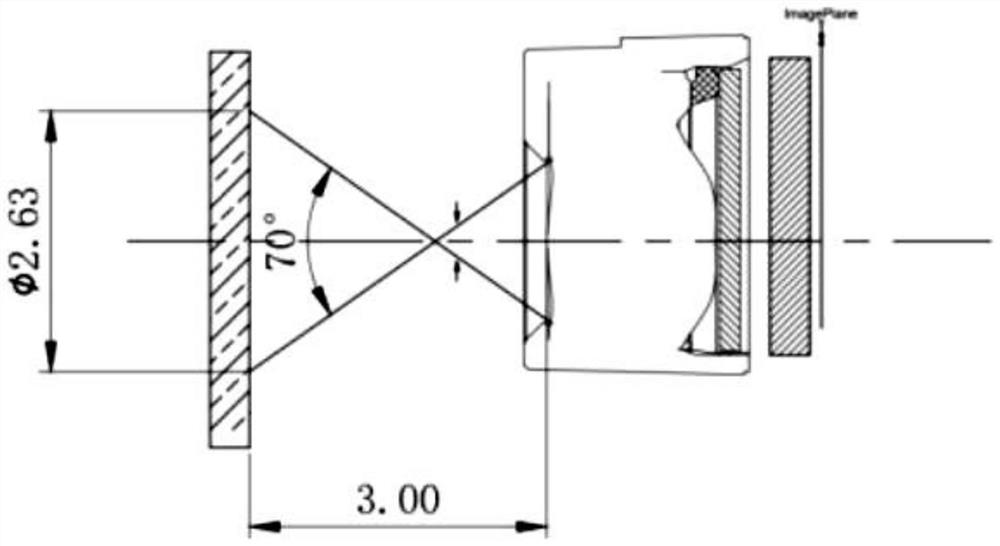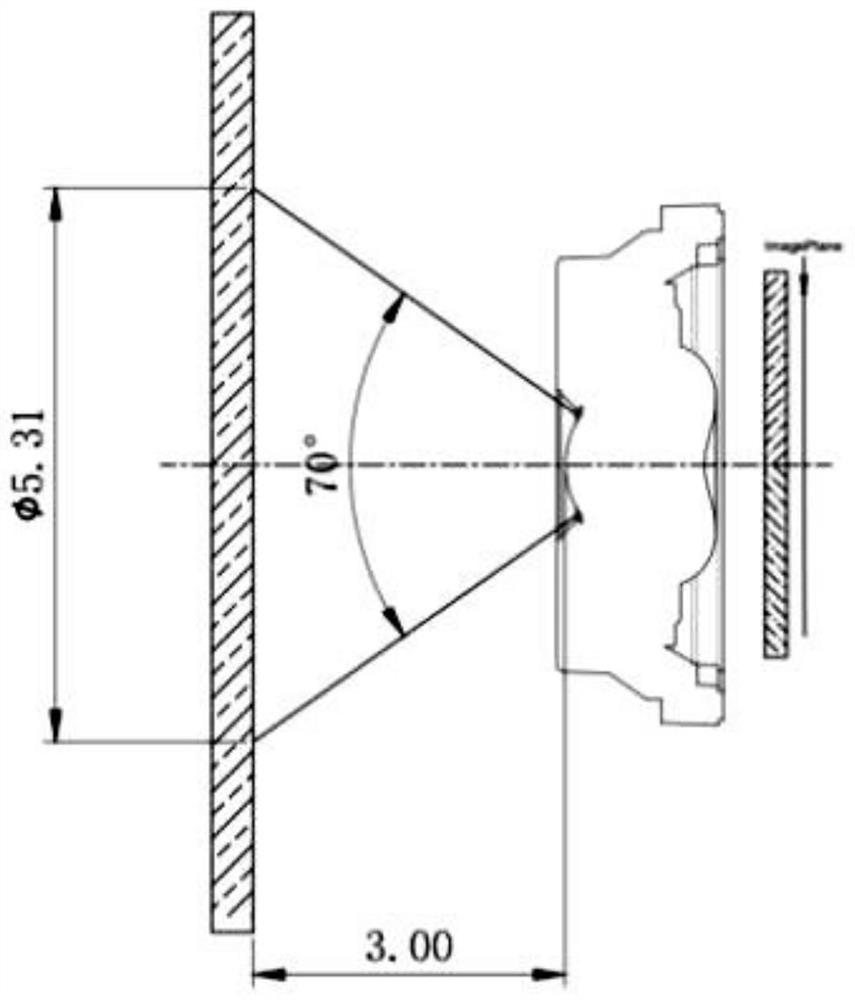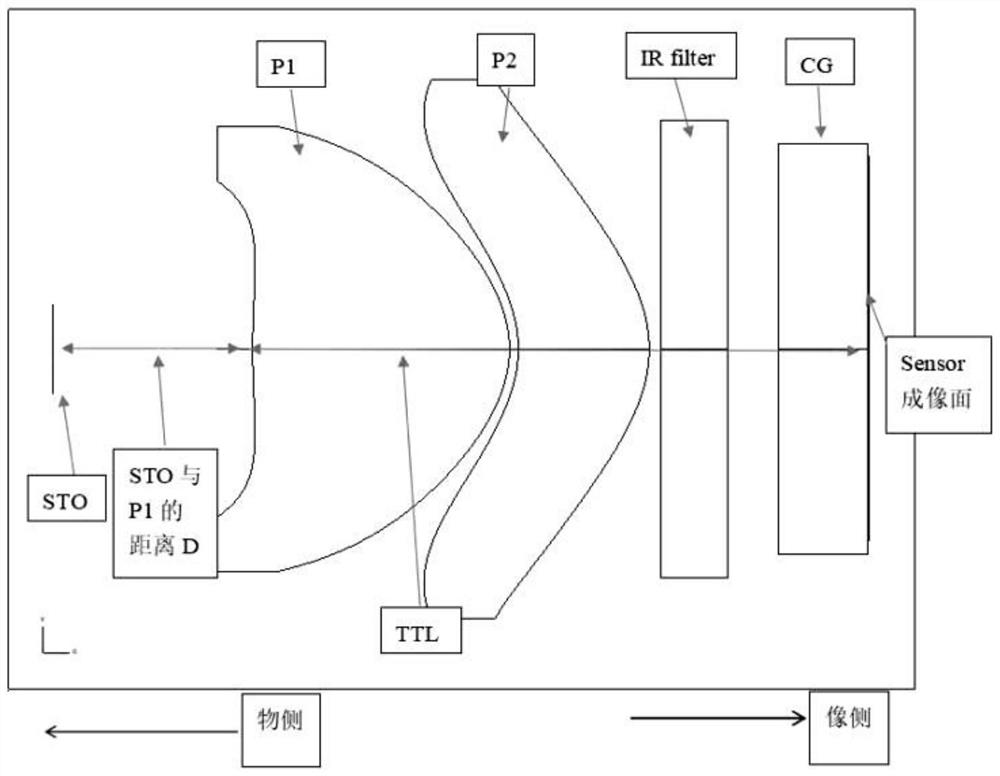Lens with aperture far away from lens
A lens and aperture technology, applied in the direction of optical filters, optics, optical components, etc., can solve problems such as yield loss, cost increase, process assembly complexity, etc., and achieve the effect of improving appearance and opening small screens
- Summary
- Abstract
- Description
- Claims
- Application Information
AI Technical Summary
Problems solved by technology
Method used
Image
Examples
Embodiment 1
[0051] This example provides reference image 3 As shown in the figure, a lens with an aperture far away from the lens is provided, wherein the lens is composed of two plastic lenses, and the "+, -" lens group structure starts from the object side: aperture aperture (STO), lens (P1) and lens ( P2).
[0052] The lens (P1) of this embodiment is a positive lens, and its surface close to the object side is called P1R1, and its center is convex toward the object side; its surface close to the image side is called P1R2, and its center is convex toward the image side.
[0053] The lens (P2) of this embodiment is a negative lens, and its side close to the object side is called P2R1, and its center is convex toward the object side; its side close to the image side is called P2R2, and its center is convex toward the image side, and its center is convex toward the object side. The edge is gradually convex toward the image side.
[0054] In this embodiment, the lens further includes an ...
Embodiment 2
[0058] At a specific implementation level, this embodiment provides a lens with an aperture far away from the lens, refer to Figure 4-7 As shown in the figure, the lens is composed of two plastic lenses, the "+, -" lens group structure, the order starts from the object side: aperture aperture (STO), lens (P1) and lens (P2).
[0059] The lens (P1) of this embodiment is a positive lens, and its surface close to the object side is called P1R1, and its center is convex toward the object side; its surface close to the image side is called P1R2, and its center is convex toward the image side.
[0060] The lens (P2) of this embodiment is a negative lens, and its side close to the object side is called P2R1, and its center is convex toward the object side; its side close to the image side is called P2R2, and its center is convex toward the image side, and its center is convex toward the object side. The edge is gradually convex toward the image side.
[0061]In this embodiment, the ...
Embodiment 3
[0068] At a specific implementation level, this embodiment provides a lens with an aperture far away from the lens, refer to Figure 8-11 As shown in the figure, the lens is composed of two plastic lenses. The "+, -" lens group structure starts from the object side: aperture aperture (STO), lens (P1) and lens (P2).
[0069] The lens (P1) of this embodiment is a positive lens, and its surface close to the object side is called P1R1, and its center is convex to the object side; its surface close to the image side is called P1R2, and its center is convex to the image side.
[0070] The lens (P2) of this embodiment is a negative lens, and its side close to the object side is called P2R1, and its center is convex toward the object side; its side close to the image side is called P2R2, and its center is convex toward the image side, and its center is convex toward the object side. The edge is gradually convex toward the image side.
[0071] In this embodiment, the lens further incl...
PUM
 Login to View More
Login to View More Abstract
Description
Claims
Application Information
 Login to View More
Login to View More - R&D
- Intellectual Property
- Life Sciences
- Materials
- Tech Scout
- Unparalleled Data Quality
- Higher Quality Content
- 60% Fewer Hallucinations
Browse by: Latest US Patents, China's latest patents, Technical Efficacy Thesaurus, Application Domain, Technology Topic, Popular Technical Reports.
© 2025 PatSnap. All rights reserved.Legal|Privacy policy|Modern Slavery Act Transparency Statement|Sitemap|About US| Contact US: help@patsnap.com



